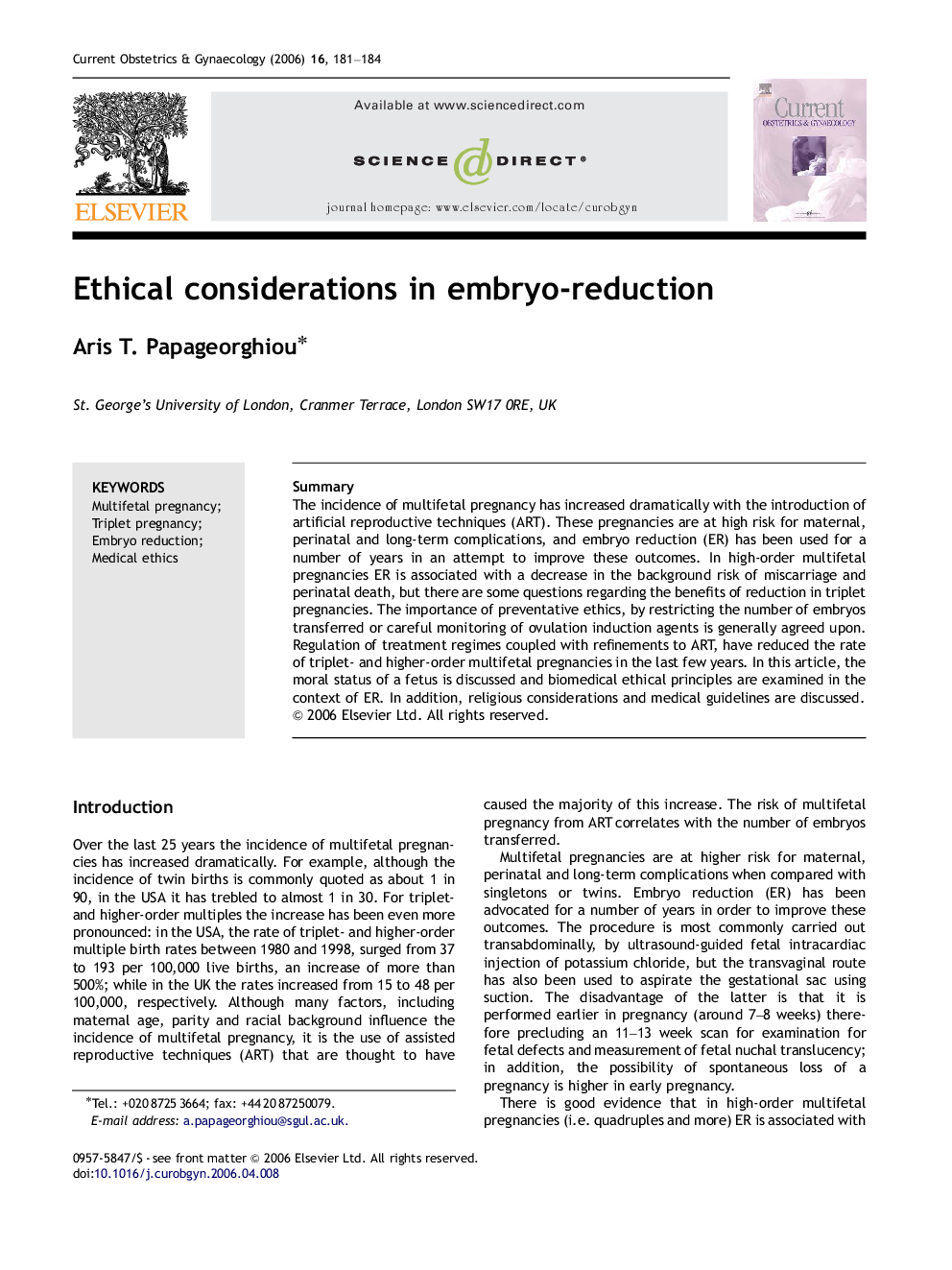| Article ID | Journal | Published Year | Pages | File Type |
|---|---|---|---|---|
| 3916302 | Current Obstetrics & Gynaecology | 2006 | 4 Pages |
SummaryThe incidence of multifetal pregnancy has increased dramatically with the introduction of artificial reproductive techniques (ART). These pregnancies are at high risk for maternal, perinatal and long-term complications, and embryo reduction (ER) has been used for a number of years in an attempt to improve these outcomes. In high-order multifetal pregnancies ER is associated with a decrease in the background risk of miscarriage and perinatal death, but there are some questions regarding the benefits of reduction in triplet pregnancies. The importance of preventative ethics, by restricting the number of embryos transferred or careful monitoring of ovulation induction agents is generally agreed upon. Regulation of treatment regimes coupled with refinements to ART, have reduced the rate of triplet- and higher-order multifetal pregnancies in the last few years. In this article, the moral status of a fetus is discussed and biomedical ethical principles are examined in the context of ER. In addition, religious considerations and medical guidelines are discussed.
